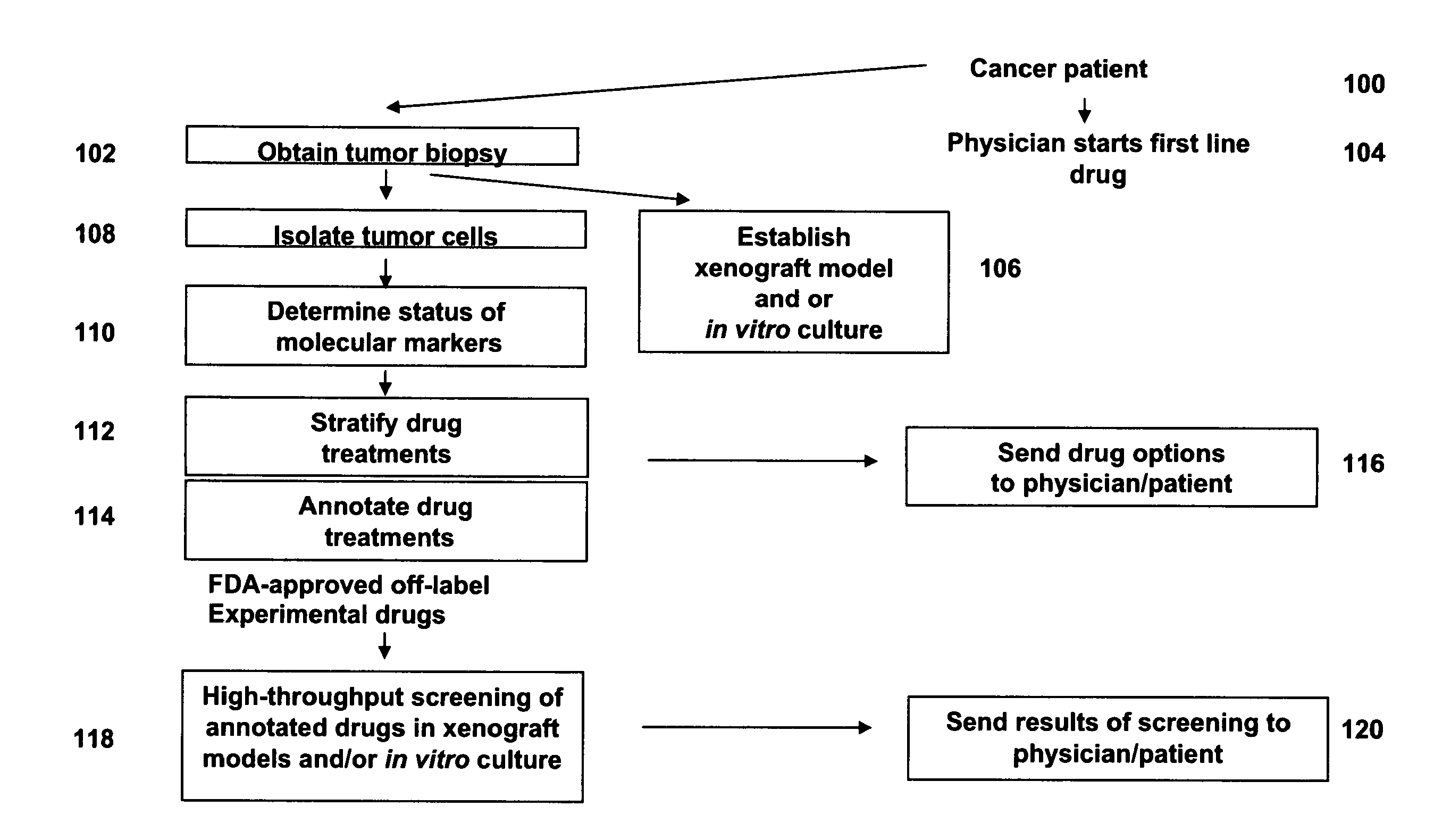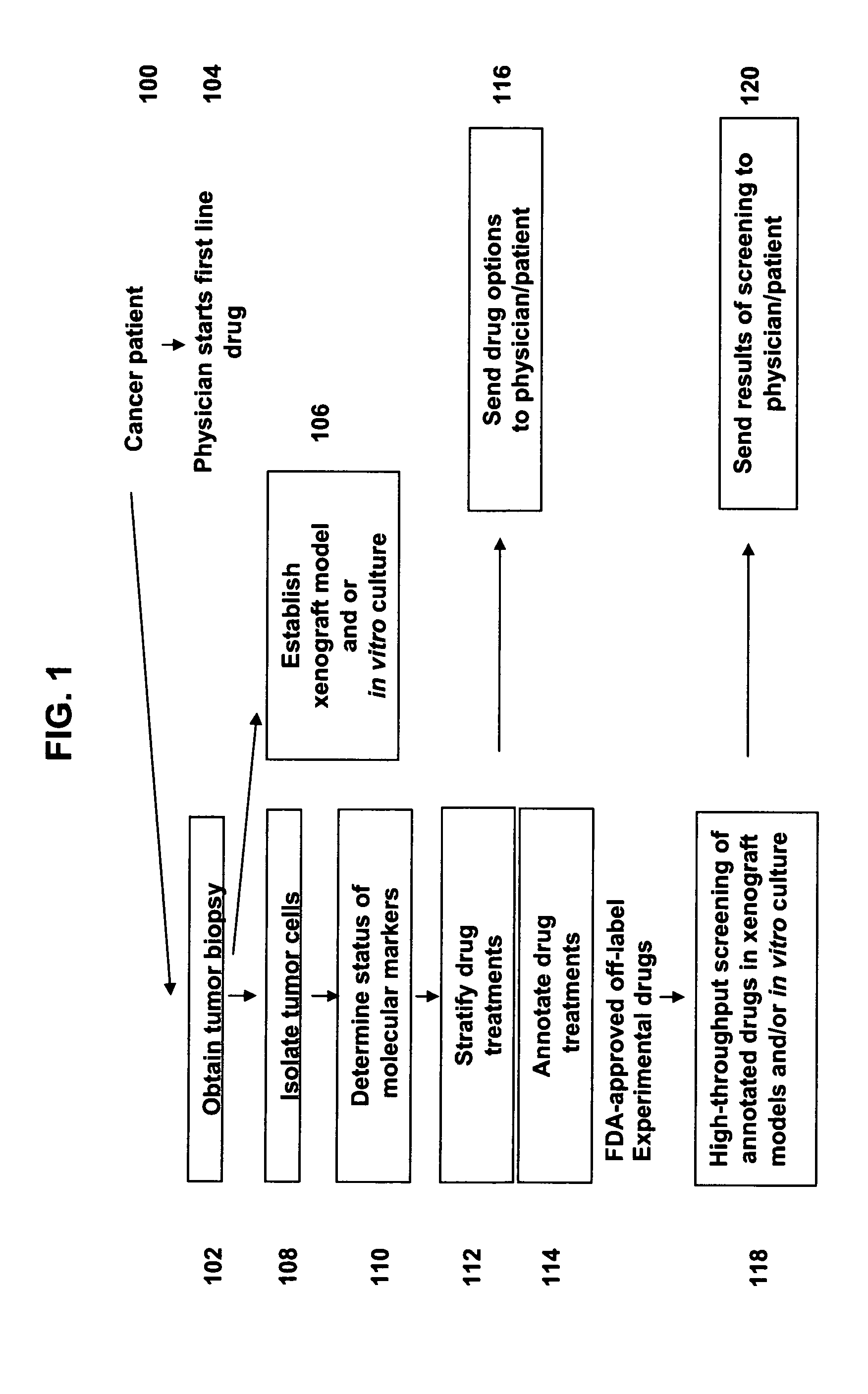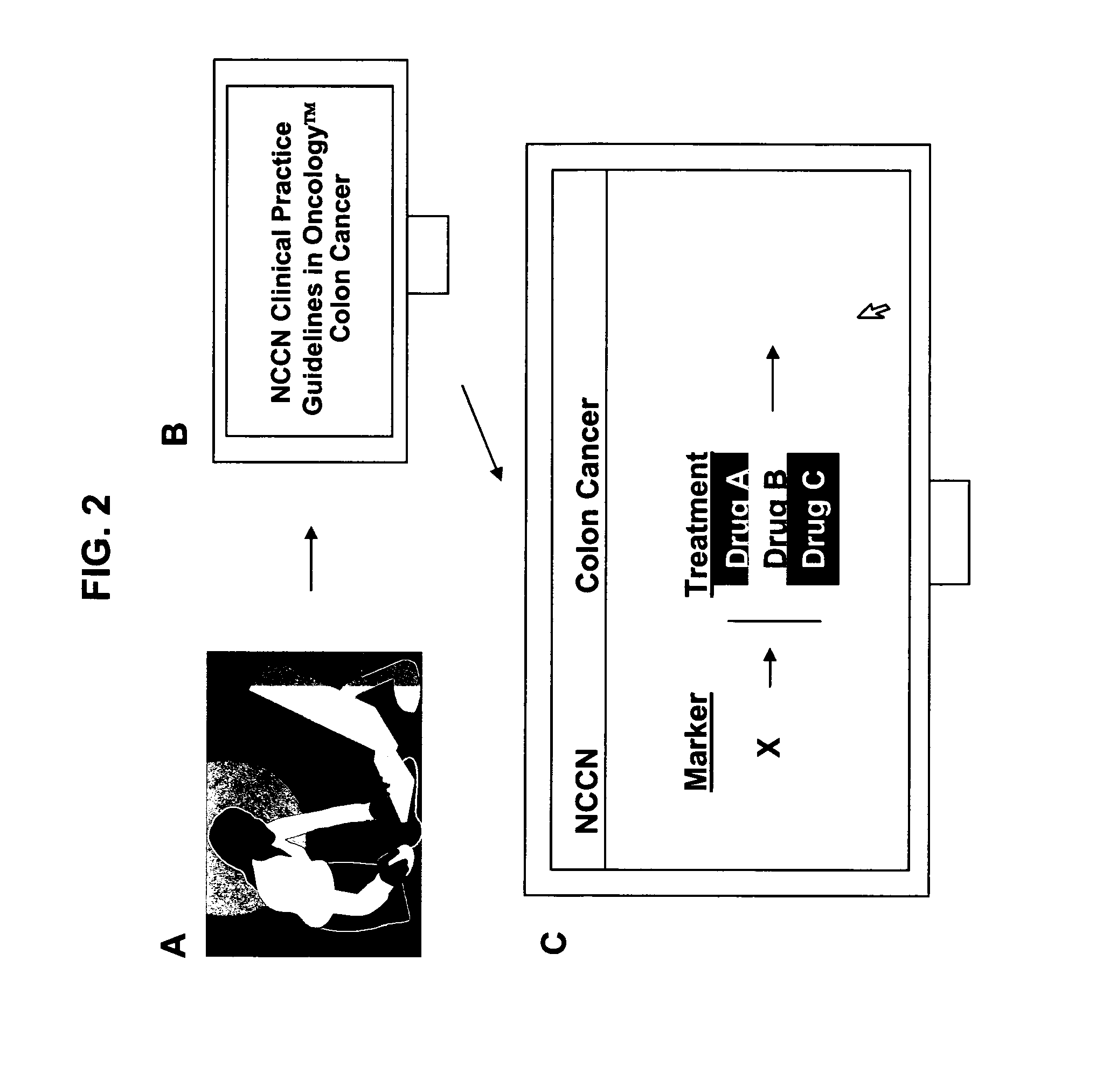Methods for stratifying and annotating cancer drug treament options
a cancer drug and option technology, applied in the field of methods for stratifying and annotating cancer drug treament options, can solve the problems of lack of reimbursement of treatment fees, lack of integrated source of knowledge regarding molecular markers and drug targets for physicians or patients,
- Summary
- Abstract
- Description
- Claims
- Application Information
AI Technical Summary
Benefits of technology
Problems solved by technology
Method used
Image
Examples
##ic example 1
Prophetic Example 1
Stratifying Colon Cancer Drug Treatment Options
[0215]A colon cancer patient visits a physician, and the physician performs a tumor biopsy. The physician arranges to submit the tumor biopsy to a personalized medicine business for characterization of molecular markers. In the meantime, the physician prescribes a first line drug treatment for the cancer patient selected from those disclosed in the NCCN Clinical Practice Guidelines in Oncology™ guidelines for Colon Cancer.
[0216]The tumor biopsy is obtained by the personalized medicine business, and primary tumor cells are separated from non-tumor cells by flow-sorting. The isolated primary tumor cells are tested for the status of one or more molecular marker(s) by comparative genomic hydridization (CGH), DNA sequencing, and high density expression. The status of the one or more molecular markers is used to analyze scientific publications for literature related to responses of tumors with molecular markers of a similar...
##ic example 2
Prophetic Example 2
Xenograft and In Vitro Cultures
[0219]A colon cancer patient visits a physician, and the physician performs a tumor biopsy. The physician submits the biopsy to a personalized medicine business for molecular characterization. In addition, an in vitro culture and nude rat xenograft model are established. A series of experimental drugs are identified as described in Prophetic Example 1 that may be helpful for the patient. While the patient is in a first line drug therapy, a high-throughput screen is performed with the experimental drugs and the in vitro culture and xenograft models. Results of the high-throughput screen are reported to the patient and the physician, who use the information in deciding on a second-line therapy if the first line therapy fails or an adjunct in the end stage administration if appropriate.
##ic example 3
Prophetic Example 3
Annotating Treatment Options on the NCCN Website
[0220]The scientific literature lists a treatment X for cancer A and cancer B. Treatment Y is useful in treating cancer B, but the affect of treatment Y on cancer A, however, is not known or studied. A report with the NCCN Clinical Practice Guidelines in Oncology™ on a website is annotated with information describing the relationship between treatment Y and cancer B and treatment X and cancers A and B, and a note is added that treatment Y may be effective for off-label use in treating cancer A.
PUM
| Property | Measurement | Unit |
|---|---|---|
| diameter | aaaaa | aaaaa |
| low-frequency microsatellite instability | aaaaa | aaaaa |
| frequency | aaaaa | aaaaa |
Abstract
Description
Claims
Application Information
 Login to View More
Login to View More - R&D
- Intellectual Property
- Life Sciences
- Materials
- Tech Scout
- Unparalleled Data Quality
- Higher Quality Content
- 60% Fewer Hallucinations
Browse by: Latest US Patents, China's latest patents, Technical Efficacy Thesaurus, Application Domain, Technology Topic, Popular Technical Reports.
© 2025 PatSnap. All rights reserved.Legal|Privacy policy|Modern Slavery Act Transparency Statement|Sitemap|About US| Contact US: help@patsnap.com



